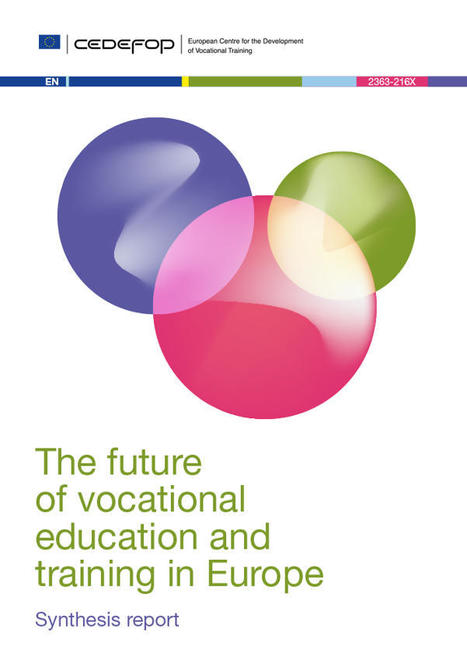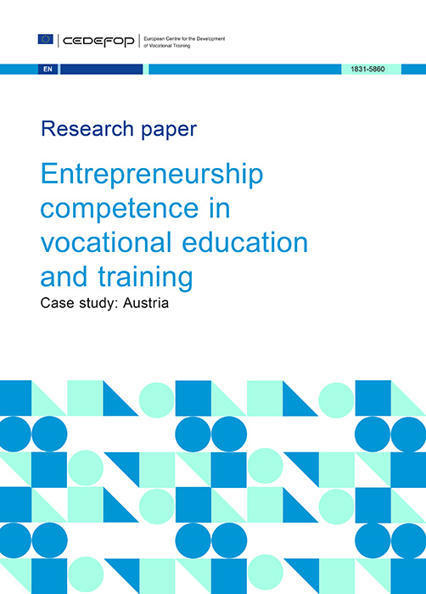 Your new post is loading...
 Your new post is loading...
The emergence of generative artificial intelligence (AI), while creating new possibilities for learning and teaching, has exacerbated existing assessment challenges within higher education. However, there is considerable expertise, based on evidence, theory and practice, about how to design assessment for a digital world, which includes artificial intelligence. AI is not new, after all, even if the current iterations of generative AI are. This document, constructed through expert collaboration, draws on this body of knowledge and outlines directions for the future of assessment. It seeks to provide guidance for the sector on ways assessment practices can take advantage of the opportunities, and manage the risks, of AI, specifically generative AI.
Via Canadian Vocational Association / Association canadienne de la formation professionnelle
The Future of VET study examined how vocational education and training (VET) has changed since the mid-1990s, and how this may influence future opportunities and challenges.
This synthesis report summarises 3 years of research involving researchers and VET experts across Europe, with discussion of findings on the content and delivery of VET, assessment practices, and the link between initial and continuing VET. In addition to connecting and synthesising the series of research papers and case studies already published, it features an analysis by country. The study provides important insights into how VET in Europe has developed over the past three decades, illustrating observed trends and developments, as well as tendencies of convergence between countries and systems.
The research has also shown that the development of VET does not necessarily form an unbroken chain leading in one direction but can be interrupted by changes of course and even reversals in policy and practice. The future of VET is still unwritten. This report aims to provide a stimulus for developing future research in this area.
Via Canadian Vocational Association / Association canadienne de la formation professionnelle
|
By 2031, 72 percent of jobs in the US will require postsecondary education and/or training. Between 2021 and 2031, there will be 18.5 million job openings per year on average, and some 12.5 million of these annualized openings will require at least some college education. After Everything: Projections of Jobs, Education, and Training Requirements through 2031 includes a national overview of job projections and their educational requirements across industries, occupational clusters, and detailed occupational groups. These latest projections demonstrate the central role postsecondary education plays in preparing the workforce of the future.
Via Canadian Vocational Association / Association canadienne de la formation professionnelle
At a glance
During the pandemic (2019–22), the US labor market saw 8.6 million occupational shifts, 50 percent more than in the previous three-year period. Most involved people leaving food services, in-person sales, and office support for different occupations.
By 2030, activities that account for up to 30 percent of hours currently worked across the US economy could be automated—a trend accelerated by generative AI. However, we see generative AI enhancing the way STEM, creative, and business and legal professionals work rather than eliminating a significant number of jobs outright. Automation’s biggest effects are likely to hit other job categories. Office support, customer service, and food service employment could continue to decline.
Federal investment to address climate and infrastructure, as well as structural shifts, will also alter labor demand. The net-zero transition will shift employment away from oil, gas, and automotive manufacturing and into green industries for a modest net gain in employment. Infrastructure projects will increase demand in construction, which is already short almost 400,000 workers today. We also see increased demand for healthcare workers as the population ages, plus gains in transportation services due to e-commerce.
An additional 12 million occupational transitions may be needed by 2030. As people leave shrinking occupations, the economy could reweight toward higher-wage jobs. Workers in lower-wage jobs are up to 14 times more likely to need to change occupations than those in highest-wage positions, and most will need additional skills to do so successfully. Women are 1.5 times more likely to need to move into new occupations than men.
The United States will need workforce development on a far larger scale as well as more expansive hiring approaches from employers. Employers will need to hire for skills and competencies rather than credentials, recruit from overlooked populations (such as rural workers and people with disabilities), and deliver training that keeps pace with their evolving needs.
Via Canadian Vocational Association / Association canadienne de la formation professionnelle
|



 Your new post is loading...
Your new post is loading...










